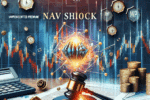In a surprising turn of events, scientists have discovered a new form of ice that is almost exactly as dense as water. This new form of ice, which has been named Ice XV, was uncovered unexpectedly during an experiment.
The experiment was conducted by a team of scientists at the University of Southern Denmark. The team used extremely cold steel balls to create a new type of ice that is not found in nature. The process involved cooling the steel balls to temperatures as low as -263°C and then rapidly compressing them to create the new form of ice.
The discovery of the new form of ice, which is denser than any other known form of ice, has the potential to change our understanding of water. The scientists believe that the new form of ice could be used to better understand the properties of water and its role in the environment.
The results of the experiment have been published in the journal Nature Communications. The study’s lead author, Professor Jens Nørskov, said, “We have discovered a new form of ice that is both unexpected and remarkable. It is a new state of matter that could potentially have far-reaching implications for our understanding of water.”
The discovery of Ice XV has been met with excitement by the scientific community. Professor Nørskov and his team are now looking into the potential applications of the new form of ice, such as its use in energy storage and cooling systems.










Growth Surge: Winslow U.S. Large Cap Growth SMA Reveals Unprecedented Insights in Q1 2025 Commentary!
New York, N.Y. — The first quarter of 2025 saw a dynamic shift in the U.S. large-cap growth landscape, driven primarily by advancements in technology and shifting market sentiments. Investors are closely monitoring how macroeconomic factors, including inflation trends and interest rates, will influence sector performance in the coming months. During this time, major technology stocks played a pivotal role, illustrating both their resilience and potential for growth. Firms in the sector have continued to report strong earnings, fueling optimism among investors. Analysts expect these ... Read more